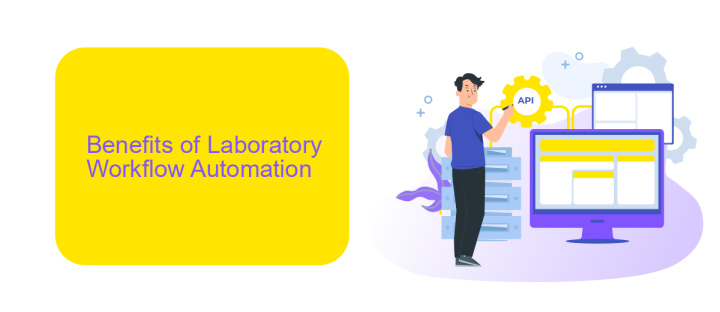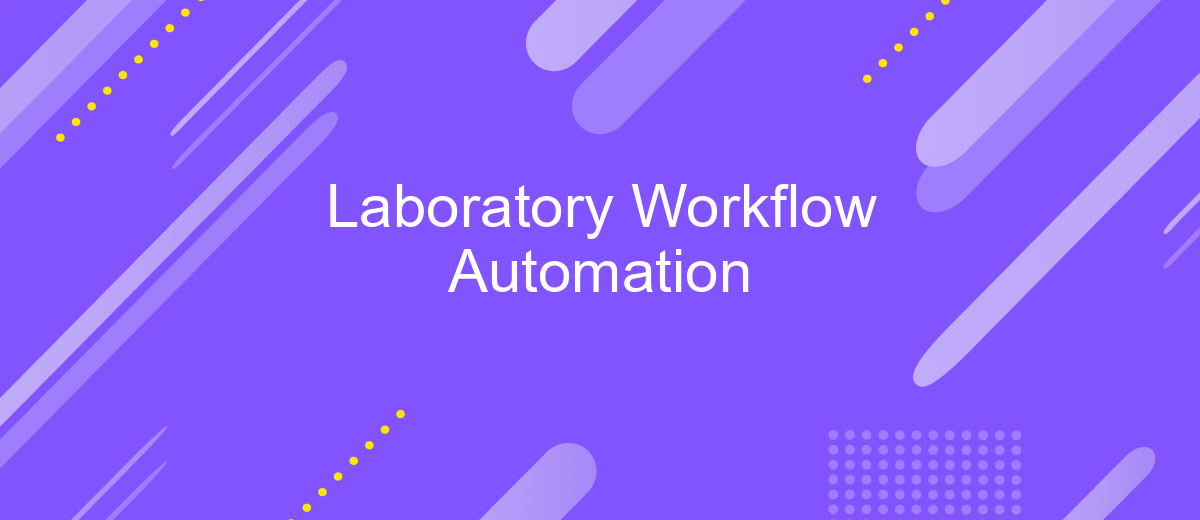Laboratory Workflow Automation
Laboratory workflow automation is revolutionizing the way scientific research and diagnostic testing are conducted. By integrating advanced technologies such as robotics, artificial intelligence, and data management systems, laboratories can achieve unprecedented levels of efficiency, accuracy, and productivity. This article explores the key components and benefits of automating laboratory workflows, highlighting how these innovations are transforming the landscape of modern science and healthcare.
Introduction
Laboratory workflow automation has become a pivotal aspect in modern scientific research and healthcare settings. By leveraging advanced technologies, laboratories can enhance efficiency, reduce human error, and ensure faster processing times. This transformation is driven by the need for higher throughput and more reliable data management systems.
- Streamlined sample processing
- Automated data entry and analysis
- Enhanced accuracy and reproducibility
- Reduced manual labor and operational costs
- Improved compliance with regulatory standards
Services like ApiX-Drive play a crucial role in this automation journey by enabling seamless integration between various laboratory instruments and software systems. With ApiX-Drive, laboratories can automate data transfers and synchronize workflows across multiple platforms, ensuring a cohesive and efficient operational environment. This not only optimizes laboratory processes but also significantly enhances productivity and data integrity.
Benefits of Laboratory Workflow Automation

Laboratory workflow automation significantly enhances efficiency by streamlining repetitive tasks, reducing human error, and accelerating sample processing times. Automated systems can handle large volumes of data quickly and accurately, ensuring that results are consistent and reliable. This allows laboratory personnel to focus on more complex and value-added tasks, ultimately improving the overall productivity and quality of laboratory operations.
Integrating various laboratory instruments and software can be challenging, but services like ApiX-Drive simplify this process. ApiX-Drive enables seamless data transfer between different platforms, ensuring that all systems work together harmoniously. This integration reduces manual data entry and minimizes the risk of errors, further enhancing the accuracy and efficiency of laboratory workflows. By leveraging such automation tools, laboratories can achieve higher throughput, better data management, and improved compliance with regulatory standards.
Key Components of Laboratory Workflow Automation

Laboratory workflow automation is essential for enhancing efficiency, accuracy, and productivity in modern labs. Several key components contribute to a successful automation system, each playing a critical role in streamlining operations and reducing manual intervention.
- Robotic Process Automation (RPA): RPA involves using robots to handle repetitive tasks such as sample handling, pipetting, and data entry, thereby reducing human error and freeing up staff for more complex activities.
- Laboratory Information Management System (LIMS): LIMS software manages samples, associated data, and laboratory workflows. It ensures data integrity and compliance, while also providing real-time tracking and reporting capabilities.
- Integration Tools: Tools like ApiX-Drive facilitate seamless integration between various laboratory instruments and software systems. This enables smooth data exchange and coordination across different platforms, enhancing overall workflow efficiency.
- Automated Data Analysis: Advanced algorithms and AI-driven tools can analyze large datasets quickly and accurately, providing valuable insights and reducing the time needed for manual data processing.
Implementing these components in laboratory workflow automation not only improves operational efficiency but also ensures higher data accuracy and reliability. By leveraging technologies like ApiX-Drive for seamless integrations, labs can achieve a more cohesive and streamlined workflow.
Implementation and Best Practices

Implementing laboratory workflow automation requires careful planning and execution to ensure efficiency and accuracy. Begin by identifying repetitive tasks that can be automated and assess the current workflow to pinpoint bottlenecks. This initial analysis will help in selecting the appropriate tools and technologies that align with your lab's specific needs.
Once the automation tools are selected, develop a step-by-step implementation plan. This should include setting up the software, configuring necessary integrations, and training staff. Utilizing integration services like ApiX-Drive can streamline the process by connecting various applications and automating data transfer, reducing manual input and errors.
- Identify repetitive tasks and workflow bottlenecks.
- Select appropriate automation tools and technologies.
- Develop a detailed implementation plan.
- Configure integrations using services like ApiX-Drive.
- Provide comprehensive training for staff.
Regularly monitor and evaluate the automated processes to ensure they are functioning as intended. Gather feedback from staff and make necessary adjustments to optimize performance. Continuous improvement and adaptation are key to maintaining an efficient and effective laboratory workflow automation system.
Case Studies and Future Outlook
Numerous laboratories have successfully implemented workflow automation, showcasing significant improvements in efficiency and accuracy. For instance, a clinical research lab integrated automated sample processing and data management systems, reducing manual errors and accelerating their research timelines. Another example is a pharmaceutical company that utilized robotic systems for high-throughput screening, drastically reducing the time required for drug discovery processes. These case studies highlight the transformative potential of automation in laboratory settings.
Looking ahead, the future of laboratory workflow automation appears promising, with advancements in AI and machine learning poised to further enhance capabilities. Integrating various systems seamlessly will be crucial, and services like ApiX-Drive can play a pivotal role. ApiX-Drive simplifies the integration of different software and hardware components, ensuring smooth data flow and interoperability. As technology continues to evolve, laboratories that embrace comprehensive automation solutions will likely lead in innovation and productivity, setting new standards in scientific research and development.


FAQ
What is Laboratory Workflow Automation?
How can Laboratory Workflow Automation improve efficiency?
What are the key components of a Laboratory Workflow Automation system?
How do I integrate different laboratory systems and instruments for automation?
What are the challenges of implementing Laboratory Workflow Automation?
Apix-Drive is a universal tool that will quickly streamline any workflow, freeing you from routine and possible financial losses. Try ApiX-Drive in action and see how useful it is for you personally. In the meantime, when you are setting up connections between systems, think about where you are investing your free time, because now you will have much more of it.

